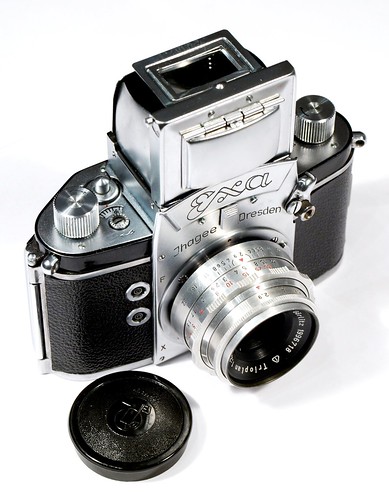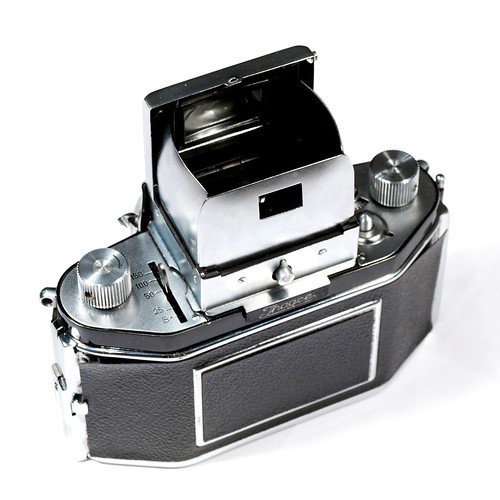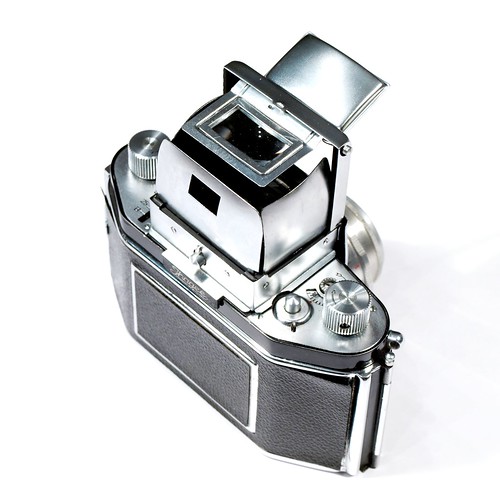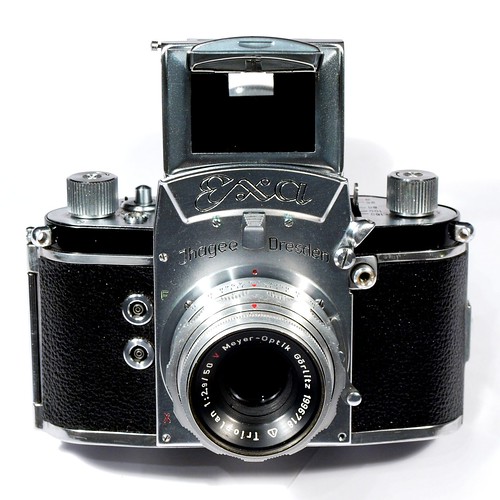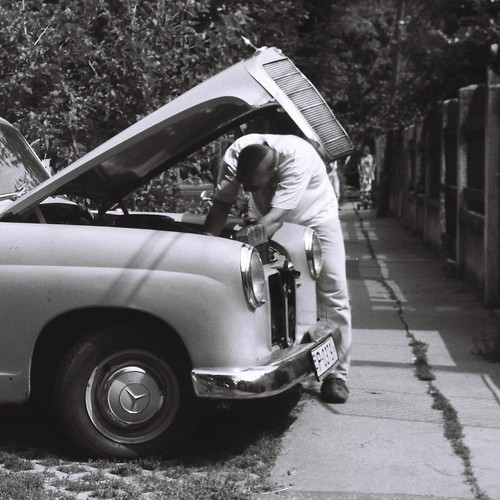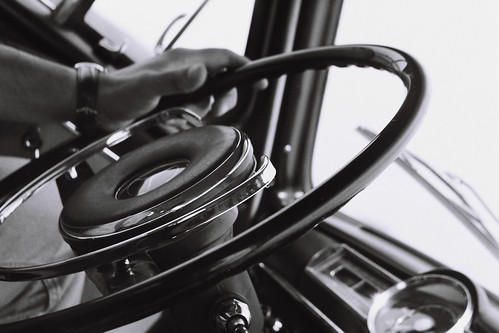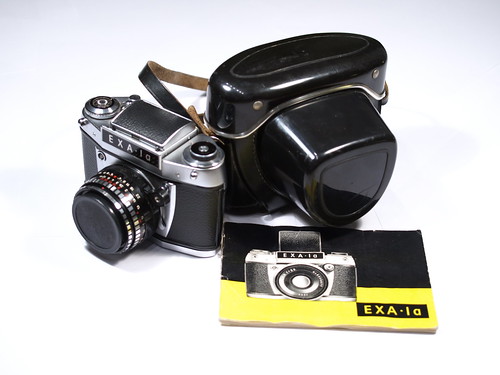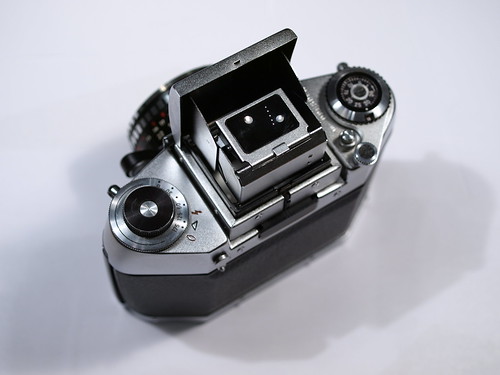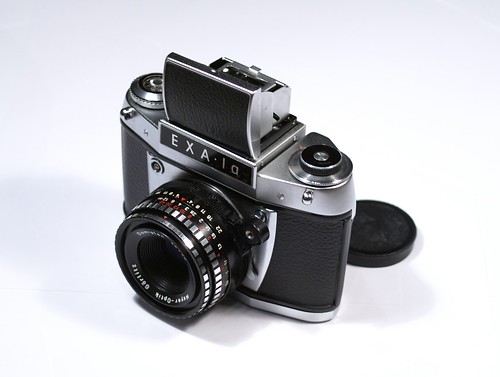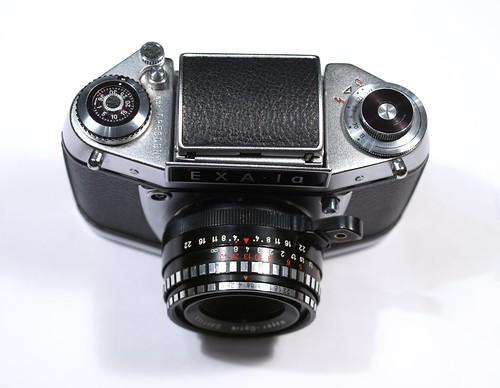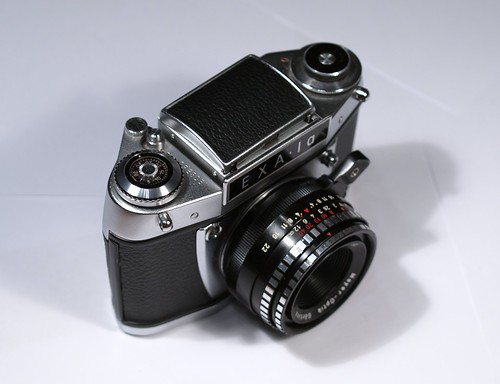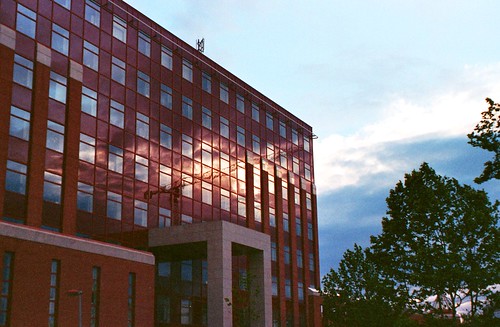- Type: Kine-Exacta Type 5 or according to an other classification: Kine-Exakta Type 1.2 - post-war model with "c" spelling; or according to a third one: Kine-Exacta I - Post War Version 2.2
- Serial No: 617715
- Manufactured: 1948
- Manufacturer: Ihagee, Dresden, Germany
- Shutter: Focal plane horizontally travelling textile curtain
- Slow shutter speeds: 12, 11, 9, 8, 7, 6, 5, 4, 3, 2, 1, 1/2, 1/5
- Slow shutter speeds with self timer: 6, 5, 3, 2, 1 1/2, 3/4, 1/5
- Fast shutter speeds: B, Z, 1/25, 1/50, 1/100, 1/150, 1/250, 1/500, 1/1000
- Lens: Meyer-Optik Görlitz Primagon 1:4.5/35
- Aperture: 4.5-22 stopless
- Lens Serial No: 1826515
- Lens mount: Ihagee/Exakta/Exa bayonet
- Last CLA: 06/2011


Kine Exakta was the World's first 35 mm SLR camera. It was in production from the spring of 1936. (In fact the prototype of the Russian Sport preceeded it in 1934 but it was not ready for the mass production until 1937.) The 'Kine' in its name refers to the Cinema, where the standard 35mm film was used for motion pictures at that time. In fact, the first self-made 35mm still cameras were used by motion picture makers to take quick test shots. This heritage can be found in the Kine Exakta in the form of a small embedded film cutting blade next to the film cassette compartment. It can be used to cut out the exposed part of the film to develop it quickly without waiting for the rest of the roll to be exposed. (See the small hooklike blade in the center of the picture below.)

Ihagee was a serious player on the medium format market producing quality folder and reflex cameras. The predecessor of the Kine Exakta was the VP Exakta, an SLR using 127 (Vest Pocket) film, hence its name. Both of them was designed by Karl Nüchterlein, a forgotten genius. The VP Exakta was a superior camera in 1933 with shutter speeds 12s to 1/1000, focal pane shutter, interchangeable bayonet-mount lens and, before 1940, wind lever cocking the shutter and putting the mirror in position. The Kine Exakta continued this path in the 35mm film market.

Now let's see the shutters. There are two of them - one for short speeds and one for long speeds and self timer. Using the short speeds from 1/25 to 1/1000, B and Z is quite simple. Cock the fast shutter with hte film wind lever an set the speed with the disc on the left. (You have to pull up the disc and rotate it in the direction of the arrow until the inner dot matches the desired speed number.) B means Bulb mode; shutter stays open until the release button is pressed. Z means that shutter opens for the first press of the release button and closes for the second - remaining open between the two.
To use long exposure times you have to cock the fast shutter and set the left disc to Z or B. Then cock the slow shutter turning the right disc counterclockwise until it stops and set the desired long speed using the longer scale (from 1/5 to 12).
The self timer can be accessed using the shorter scale (from 1/5 to 6) on the right side disc. If you want to use long exposition with the self timer you just cock the fast timer and set it to B or Z. Then you cock the slow shutter and set the desired time on the shorter scale.
To use short times with the self timer you should cock the fast shutter and set it to the desired speed. Then you cock the slow shutter and set it to any speed on the shorter scale.
So you have 20 normal speeds and 15 with self timer! Sophisticated enough? And one more thing. You cannot release the shutter with the finder hood closed; there is a shutter lock mechanism preventing unwanted expositions.

[More to come soon...]

Ihagee was a serious player on the medium format market producing quality folder and reflex cameras. The predecessor of the Kine Exakta was the VP Exakta, an SLR using 127 (Vest Pocket) film, hence its name. Both of them was designed by Karl Nüchterlein, a forgotten genius. The VP Exakta was a superior camera in 1933 with shutter speeds 12s to 1/1000, focal pane shutter, interchangeable bayonet-mount lens and, before 1940, wind lever cocking the shutter and putting the mirror in position. The Kine Exakta continued this path in the 35mm film market.

Now let's see the shutters. There are two of them - one for short speeds and one for long speeds and self timer. Using the short speeds from 1/25 to 1/1000, B and Z is quite simple. Cock the fast shutter with hte film wind lever an set the speed with the disc on the left. (You have to pull up the disc and rotate it in the direction of the arrow until the inner dot matches the desired speed number.) B means Bulb mode; shutter stays open until the release button is pressed. Z means that shutter opens for the first press of the release button and closes for the second - remaining open between the two.
To use long exposure times you have to cock the fast shutter and set the left disc to Z or B. Then cock the slow shutter turning the right disc counterclockwise until it stops and set the desired long speed using the longer scale (from 1/5 to 12).
The self timer can be accessed using the shorter scale (from 1/5 to 6) on the right side disc. If you want to use long exposition with the self timer you just cock the fast timer and set it to B or Z. Then you cock the slow shutter and set the desired time on the shorter scale.
To use short times with the self timer you should cock the fast shutter and set it to the desired speed. Then you cock the slow shutter and set it to any speed on the shorter scale.
So you have 20 normal speeds and 15 with self timer! Sophisticated enough? And one more thing. You cannot release the shutter with the finder hood closed; there is a shutter lock mechanism preventing unwanted expositions.

[More to come soon...]

